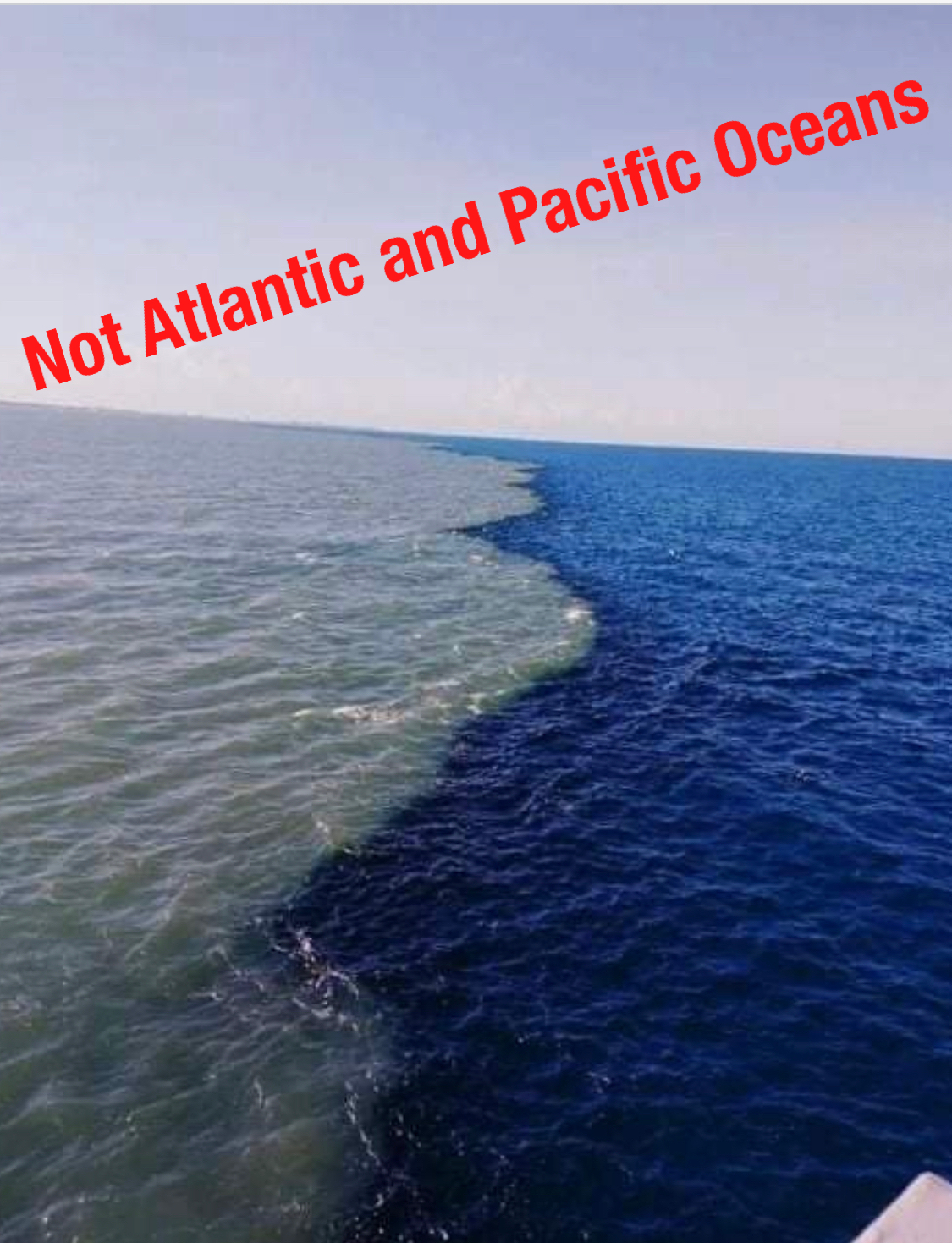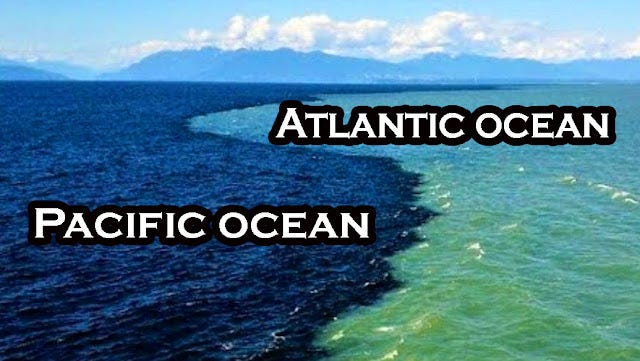Why Do The Atlantic And Pacific Never Mix

Ever stood on a beach and wondered, "What happens when the big oceans meet?" It's like wondering what happens when chocolate meets peanut butter – hopefully, deliciousness! But with the Atlantic and Pacific, it's...well, a bit more complicated, and less tasty.
The Great Unmixing
You've probably seen pictures or videos online: two distinct bodies of water crashing together, but seemingly refusing to blend. It’s often described as a stark line in the ocean, one side blue, the other green. It’s like a watery standoff at high noon! But is it really true that they don’t mix?
Here's the thing: they do mix, eventually! It’s not like an invisible wall keeps them apart forever. Think of it more like two strong personalities meeting at a party.
Why the Hesitation?
So, why the initial reluctance? Several factors play a role. The main culprits are density, salinity, and temperature.
Density is a big one. Imagine trying to mix oil and water – similar principle! If one body of water is significantly denser (usually due to being colder or saltier), it will resist mixing with the less dense water.
Salinity, or the amount of salt in the water, is another key player. The Pacific, generally, is less salty than the Atlantic. This difference in salinity contributes to the density difference.
Temperature also matters. Colder water is denser than warmer water. These differences create what's called a halocline (salinity difference) or a thermocline (temperature difference), acting like a buffer between the two.
Surface Tension and Other Oddities
Surface tension can also create the illusion of a distinct separation. Think of how water droplets bead up on a waxy surface. This effect, combined with differing compositions, can make the boundary more visible.
Current and wave patterns also play a role. They can create swirling eddies and complex movements at the meeting point, which further emphasize the visual difference. It's like watching a carefully choreographed watery dance!
Mixing Eventually Happens
Despite all these factors, it's important to remember that mixing does occur. It's just a gradual process, not an instant blend.
Think of it like slowly stirring honey into tea. At first, you see distinct swirls, but eventually, it all becomes one homogenous drink. The oceans are just on a much grander (and slower!) scale.
The Real Beauty of it All
The point where the Atlantic and Pacific meet isn’t a battleground of unmixable foes. It’s a dynamic, fascinating zone where different water masses interact, creating unique ecosystems and influencing global climate patterns.
Next time you see a picture of the "unmixing" oceans, remember it's not about stubborn refusal, but a beautiful illustration of the complex forces that shape our planet. It's a reminder that even things that seem different can eventually find a way to mingle and create something new. And who knows, maybe the Atlantic and Pacific are just taking their time, carefully crafting the perfect oceanic cocktail. Cheers to that!


















